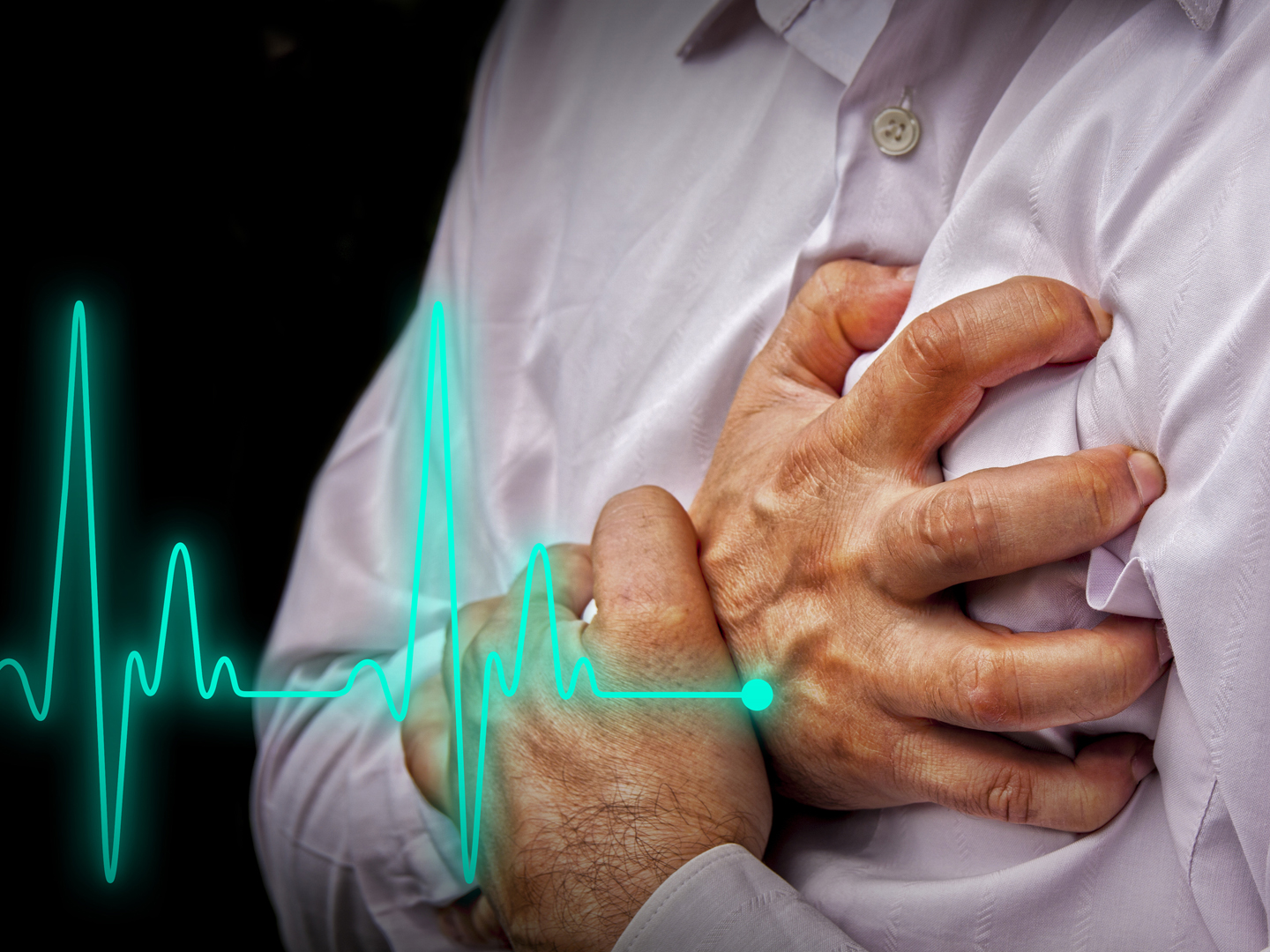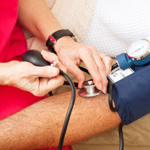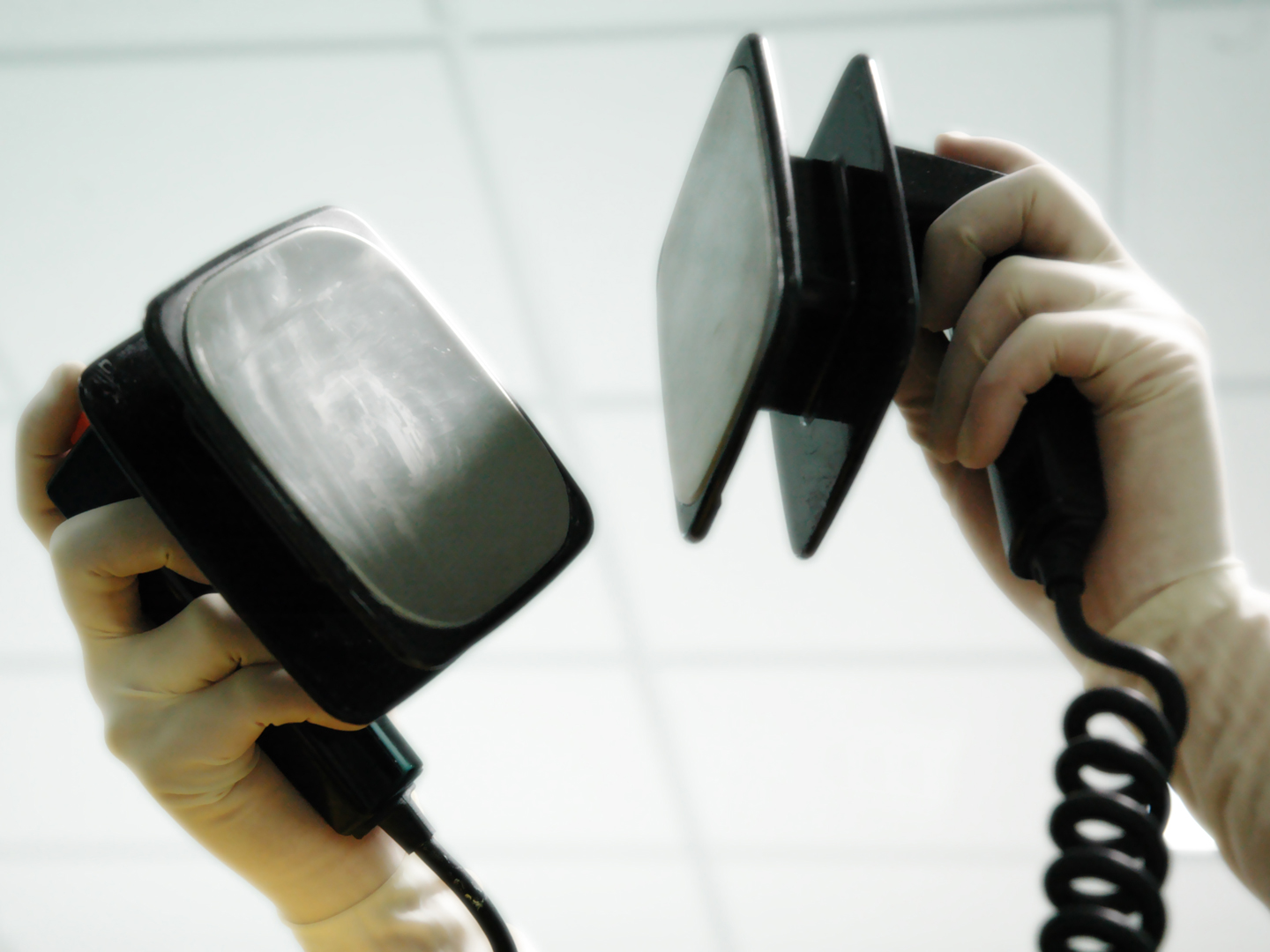Heart Attack

What is a heart attack?
A heart attack (myocardial infarction) occurs when blood flow to a part of the heart is blocked, usually by a blood clot lodged in one of the coronary arteries. As a result, part of the heart muscle is damaged or dies.
What are the symptoms of a heart attack?
The most common symptom is chest pain that feels like a tight band around the chest. The pain can move to the arms, shoulders, neck, teeth, jaw, abdomen or back. It can be severe or mild. In some cases, the pain feels like bad indigestion, but it also may feel as if something heavy is sitting on the chest, like the chest is being squeezed, or like heavy pressure is being applied. Typically, the pain lasts longer than 20 minutes and isn’t relieved by rest or by taking nitroglycerin, a medication which may have been prescribed for angina, a classic symptom of cardiovascular disease that sometimes predicts heart attacks. Heart attack pain may ease and then return. Other symptoms can include anxiety, cough, fainting, lightheadedness, dizziness, nausea, vomiting, palpitations (the heart seems to be beating too fast), shortness of breath and/or heavy sweating.
It is also possible to have a heart attack that causes no symptoms – these are called “silent” heart attacks. Women are more likely to experience atypical symptoms in the presence of coronary artery disease and are less likely than men to experience crushing chest pain. In fact, chest pain occurs in only a little more than half of women during a heart attack. The location of pain related to diminished blood flow to the heart is more likely to vary in women, and can include the upper back, neck and jaw for reasons that are not well understood.
What are the causes of a heart attack?
Underlying most heart attacks is atherosclerosis, or “hardening of the arteries,” a disease that occurs when cholesterol-rich plaque builds up along arterial walls creating conditions that can lead to a heart attack.
How is the potential for a heart attack determined?
These tests can help a physician determine the level of risk of heart attack in a given patient:
- Computed Tomography (CT Scan): This test provides computer-generated pictures of the heart, brain or other areas of the body. In the case of the heart, it can help evaluate the condition of the coronary arteries that supply the heart. A CT scan may show narrowing of large arteries and reveal calcium build-ups in coronary artery walls.
- Stress Test: An assessment of how long you can continue to walk on a treadmill as the speed increases and how fast your heart rate returns to normal after 30 minutes or less of exercise. A stress test can also reveal abnormal changes in heart rate or blood pressure, or elicit shortness of breath or chest pains and abnormal changes in the heart’s rhythm or electrical activity when cardiovascular disease is present (which is why there is usually someone there to monitor you during the examination).
- Angiography: With this test, a thin, flexible tube (catheter) is placed in and fed up a blood vessel of the arm, groin or neck towards the heart. Then dye that can be seen on an X-ray is injected through the catheter to show the coronary arteries. X-rays are then taken to show whether plaque or a clot is blocking any of the coronary arteries; they can also show how severe the blockage is and how much or little blood is flowing through the arteries. This test is typically used to either help establish whether or not a person’s chest pain, acute or chronic, is due to blockage of the arteries or, in the case of an already diagnosed acute heart attack, to define the problem and intervene to open the specific vessel that is blocked if possible, often by the placement of a stent.
How is a heart attack diagnosed?
When the symptoms are compatible with a heart attack, a number of tests still need to be performed to definitively diagnose a heart attack, beginning with a physical exam during which a physician or a nurse listens to the heart via a stethoscope. The diagnostic process can include the following tests and procedures:
- Electrocardiogram (EKG): This test to record the heart’s electrical activity shows how fast the heart is beating, as well as the regularity of its rhythm. It also can reveal signs of a past or present heart attack. Comparing old and new EKGs is one way physicians can identify changes that may indicate heart disease.
- Troponin Test: A blood test to determine blood levels of the proteins troponin T and troponin I, which are specific to the heart and released when the heart muscle is damaged. The results of this test can help confirm that a heart attack has occurred. The higher the levels of these two proteins, the greater the damage to the heart.
- Echocardiogram: Here, sound waves are used to create a moving picture of the heart. It also yields information about the size and shape of the heart and how well the heart’s chambers and valves are working. Echocardiography can also reveal areas of poor blood flow to the heart and areas of the heart that aren’t contracting normally due to new or previous injury to the heart muscle.
What is the conventional treatment of a heart attack?
Heart attack patients usually are treated with drugs to limit damage to the heart by breaking up clots and preventing the formation of new blood clots, stabilizing plaque and improving blood flow to the heart. Giving these types of drugs within 30 minutes of the onset of symptoms provides the best opportunity to limit the amount of damage to the heart. The longer the wait, the more damage can occur. Consequently, if a reader is having symptoms compatible with a heart attack that last more than five minutes, don’t wait – call, or get someone to call, 911. The drugs given may include aspirin and other anti-platelet medications given to prevent additional blood clotting, and “clot busting” drugs called thrombolytics which may help dissolve the obstructing blood clot before significant damage is done if given ideally within three hours of the first heart attack symptom.
In addition, certain procedures may be necessary, including angioplasty to open blocked or narrowed coronary arteries, improve blood flow and relieve angina; installation of a stent, a small mesh tube inserted to increase the internal diameter of a blood vessel narrowed by disease; or coronary bypass surgery, in which blood vessels taken from other areas in the body are used to route blood around (bypass) blockages in the coronary arteries.
In addition to drugs and medical procedures to help manage and limit heart damage with an acute heart attack, conventional medical treatment emphasizes reducing risk factors that might contribute to future heart disease and heart attacks, including high cholesterol, diabetes and high blood pressure, with lifestyle changes such as losing weight, if necessary; stopping smoking; following a heart healthy diet; getting regular exercise and learning to deal with stress. Specific drug therapy is also initiated as indicated.
What therapies does Dr. Weil recommend for a heart attack?
If you develop the symptoms described above, call 911 right away – do not wait.
The faster you get evaluated and treated by a well-trained medical team the less likely it is that you will suffer significant heart damage, if you are indeed having a heart attack.
If you are at risk for heart disease or have had a heart attack in the past, Dr. Weil recommends the same lifestyle changes as conventional physicians, and also emphasizes eating a low-glycemic index diet and taking the following measures:
- Get Adequate Fish Oil. The omega-3 fatty acids in fish and fish oil supplements have been shown to be an effective preventive strategy against heart disease. They can lower triglyceride levels, increase HDL cholesterol, help minimize inflammation and blood clotting, and keep blood vessels healthy. Dr. Weil recommends eating oily fleshed, wild-caught, cold-water fish two to three times per week. If you use fish oil capsules, he recommends taking two grams daily of a brand that contains both EPA and DHA.
- Coenzyme Q10 (CoQ10). One of the most important antioxidant supplements for protection against many forms of cardiovascular disease, CoQ10 helps protect LDL cholesterol from oxidation, maintain healthy blood vessels, protect against clots and plaque rupture, and support optimal functioning of the heart muscle. Dr. Weil recommends taking at least 90 to 120 mg of supplemental CoQ10 if you are taking statin medications, have a family history of heart problems, or are at increased risk for cardiovascular disease.
Learn the difference: Cardiac Arrest vs. Heart Attack.









